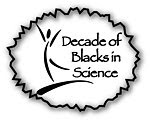I'm not just pulling your leg here. A Mountain Lion really was spotted in the St. Louis, Missouri Metro area on January 12, 2011. Local news agencies have reported the sightings taken from a hiking trail camera in the suburb of Chesterfield, Missouri.
Mountain Lions, also called Pumas and Cougars (I prefer Cougar) - scientific name Puma concolor, are the ecological equivalent of their cousins in Africa - the Lion. Like their cousins, they are the big cats of North America. With the exception of the very young, only humans are a major threat to these top predators. However, in natural settings they do compete with Gray Wolves and Grizzly Bears (other top predators).
Mountain lions are solitary animals. Males and females mate and then go their separate ways. The female raises her 1-3 cubs alone for about a year and half. In the meantime, they ambush prey like deer, moose, or anything smaller than they are for food.
Before European colonization and expansion into the Americas, this great cat call all of North, Central, and South America home - from Canada to Chile. They are beautiful and majestic creatures. Though sightings in Missouri are still rare (only 13 confirmed sightings since 1994), this does signal a positive turn for the big cat. In fact, sighting of almost any predator in an urban area means that species' numbers are growing and individuals are spreading out looking for a territory of their own. Assuming this isn't someone's pet* or rehab animal, that's exactly what the Missouri Department of Conservation thinks this cat was doing - searching for mates and a home range.
As much as I am excited about this wildlife sighting in a urban area, I am also worried. Some wildlife are just not very well-suited to live along side people. Large animals and predatory mammals are such examples. Until we as people, learn to appreciate large wildlife and are willing to share space and resources with them, these animal just don't do well. All it takes is for someone to be frightened or startled and this beautiful animal will become a mount or trophy on someone's hunting wall.
 |
| A better picture of a Cougar from It's Nature! |
1. Do not advance on the cat or kittens (defending young is one sure way to irritate Mama cat and bring out the nasty. Walk away from the kittens - resist the cuteness and novelty. If Mama catches you there, then you're in big trouble). Cats hate to be cornered. Stay far away, but keep your eyes on them.
2. Do not make eye contact. Stare downs are threatening.
3. Do not run. Cats like to chase things. It's part of their predator behavior. Plus, they are rather fast.
4. Do not play dead. Cats are also very curious. Lying dead and still might cause the cat to approach and sniff you. You do not want to be in close contact to those claws or teeth.
5. Keep your distance if you can and stand wide and tall. Make calm loud noises. Large size and sounding powerful usually deters predators. You want it to think that you're just too much to fool with.
6. If the fat does advance and your life is threatened, then defend your self fully. Fight the cat, hit it, or put something between you and the beast. Make it your mission to come out alive.
And God forbide any of these things happen, but if it does and you live, report your incident immediately to park, wildlife, or conservation official. But use common sense. If you've been warned of sightings of cougars in a particular area, then don't go looking for them. It saddens me when I hear of wildlife being killed or put down for attacking a person who was doing or getting into something s/he knew fully well to avoid. Don't be that person.
* Owning wildlife as pets is illegal and is a practice that I certainly frown upon. I understand how exciting it can be to be next to exotic wildlife. no matter how adorable, cute, cuddly or drawn you are to them, remember they are wild. They have no domesiticated senses of loyalty to, affection for or willingness to obey humans. If you feel that drawn to being near wildlife, become a zoologist. That way you will learn the proper ways to handle and interact with wild creatures and can do so often.
























